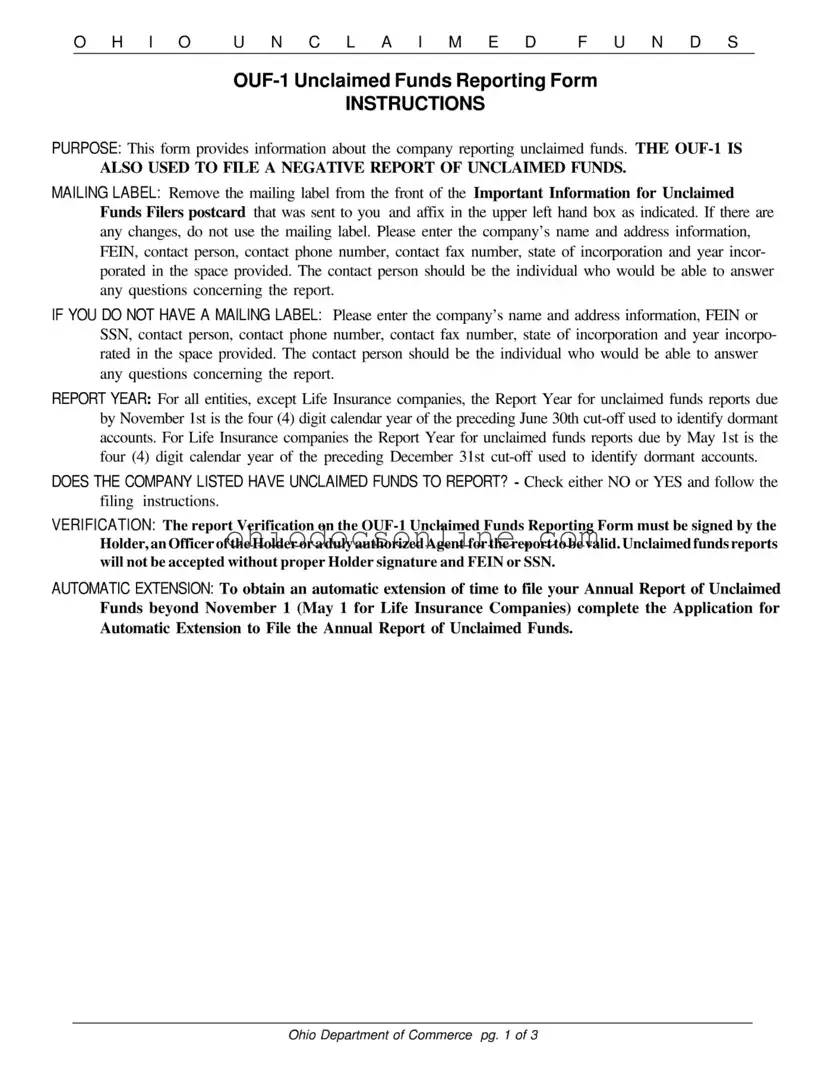Ohio Unclaimed Template in PDF
The Ohio Unclaimed Funds Reporting Form, known as the OUF-1, is designed for companies to report unclaimed funds. This form can also be used to file a negative report if there are no unclaimed funds to report. Proper completion and submission of this form are essential for compliance with state regulations.
Open Editor
